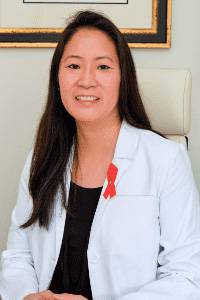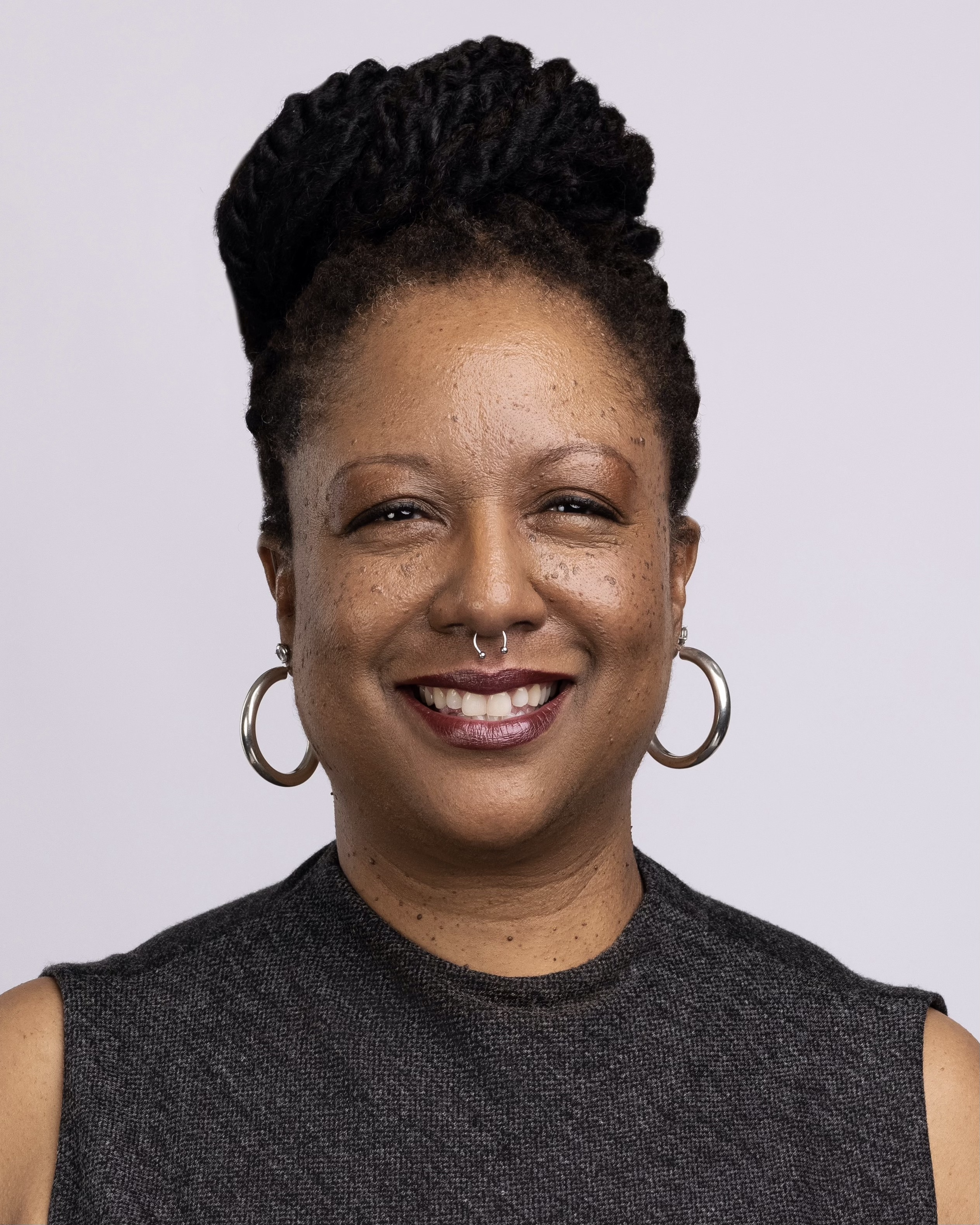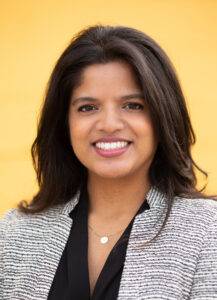by Laura Manns-James, PhD, CNM, WHNP-BC

Laura Manns-James, PhD, CNM, WHNP-BC
As you may have gathered from the title, this isn’t going to be a typical breast cancer awareness month post with lots of advocacy for mammography and self-breast exams. American women are already fearful of breast cancer, having received 30 years of public health messaging on the importance of early detection. We’re aware, already! We’ve been told by mammography campaigns that we are selfish or even crazy if we put off being screened, and pink ribbons abound in our everyday lives, adorning everything from cars to bathroom stalls (*Resource 1). But is all this screening and early detection really working? If we really want to “save the ta-tas”, what’s the best way to go about it?
The answer to this question is somewhat complicated, so bear with me. While the number of breast cancer diagnoses has risen since 1990, the number of breast cancer deaths has gone down. At first, it seemed reasonable to believe that the reduction in death rates was due to screening effectiveness: more women were getting mammograms, and deaths were going down, so surely screening was working! Breast cancers were being detected earlier, allowing for earlier treatment, preventing more breast cancer deaths. Makes sense, right? But growing evidence now suggests something else was really responsible for the reduction in breast cancer deaths: better treatment. Treatment was improving to the point that no matter when a breast cancer was discovered—earlier or later in the disease process—fewer women were dying of it.
While the idea that early detection saves lives makes a lot of sense intuitively, more and more evidence is suggesting that it just isn’t so. We don’t actually see a decrease in breast cancer deaths when women who are at low or average risk do formal monthly self-breast examinations. Nor do we see any differences with screening clinical breast exams performed by doctors or advanced practice nurses (*Resource 2). These findings about self-breast exams are based on studies that include hundreds of thousands of women, so the evidence that these screening methods don’t work is quite strong.
More recent evidence suggests that even mammography doesn’t actually save lives; while it may prevent a few more women from dying of breast cancer each year (about 2 or 3 in 1000), there are more deaths from other causes in the group of women that regularly engage in mammography screening — so the overall death rates are about the same, whether women get mammograms or not (*Resource 3). Mammography means slightly fewer deaths from breast cancer, and slightly more deaths from other causes, at the same ages.
So why doesn’t screening work better? After all, it seems like it should, right? It turns out that screening “works”— in the sense that it makes a difference between life and death for women with breast cancer — in a surprisingly small number of situations. Some breast cancers grow very, very slowly—and provide plenty of time for intervention no matter how the cancer is found. Other cancers (thankfully few in number!) are so aggressive that finding them early doesn’t really matter, because no available treatments work (*Resource 4). So it’s the medium-speed cancers that screening is designed to address. But even medium-speed cancers are treatable with chemotherapeutics and interventional radiology these days, and early detection just isn’t as important as it was in the days before these treatments improved.
But what’s wrong with breast cancer screening, if it reassures us? Even if it doesn’t actually save our lives, isn’t there value in finding out on a regular basis that no disease is lurking in our breasts? Well, this brings us to the downside of screening: unreliable results. It turns out that formal monthly self-breast examination, clinical breast exams by a physician or advanced-practice nurse, and mammography frequently find problems that aren’t really there. In fact, somewhere between 91 and 98% of all abnormal screening mammogram results for women ages 40 to 70 are false positives: they don’t turn out to be cancer. These abnormal results also occur frequently: 50% of women who have annual screening mammograms will experience an abnormal result in a 10-year period (*Resource 5). After an abnormal screening mammogram, we have to sort out what’s really happening….and that means a woman has to wait nervously while additional tests are performed. Sometimes that means an ultrasound or MRI, and sometimes that means a biopsy. Either way, it’s usually days to weeks before she knows whether or not she cancer. That’s a long time to be in limbo, and abnormal mammograms cause a lot of anxiety (*Resource 5).
Sometimes even with the additional testing, a woman still won’t know whether or not she really has invasive cancer. Mammograms are so good at finding tiny clusters of concerning-looking cells that they are now identifying a whole category of maybe-cancers: cells that look like they could become invasive cancer, but haven’t yet. These ductal carcinomas in situ, which make up 1/5 of new breast cancer diagnoses, (*Resource 6) are typically treated rather than observed–which means about 15 in 1000 screened women are getting treatment for abnormal cells that might, if left alone, never actually become invasive and harm them (*Resource 3).
Currently, the U.S. Preventive Services Task Force recommends screening mammography starting at age 50 for low and average-risk women, to be repeated every two years. They do not recommend clinical breast exams or formal self-breast examination. Women have the right to understand the benefits and the risks of screening, and conversations with clinicians should provide an overview of their options, not just an appointment for mammography. It should be noted that some groups of women are at very high risk for developing breast cancer, and they may benefit from mammography and/or preventive surgery. Women with heritable BRCA-1 and-2 mutations are at very high risk for developing breast cancer, as are women who have a history of chest radiation — particularly as young adults or children (*Resource 7). These women should talk with breast specialists about an individualized plan of screening and prevention. While disparities in breast cancer deaths persist among women of different ethnic and racial groups (*Resource 8), screening recommendations don’t change based on ethnicity.
If screening for most women isn’t all it’s cracked up to be, what can we do to prevent breast cancer? Fortunately, there are some things we can do to reduce our risk (*Resource 9): first, maintain a healthy weight and normal body mass index. Obesity increases breast cancer risk. Second, reduce or avoid alcohol consumption. Alcohol helps breast cancers develop. Third, breastfeed as long as possible. Breastfeeding reduces the risk of breast cancer considerably, and the longer we nurse, the better. These steps actually reduce the risk of developing breast cancer in the first place.
Finally, while we no longer recommend monthly self-breast examination–since the extra time doesn’t really make a difference, and women only have so much time and energy–it’s true that women still often find their own breast cancers in the course of daily events. Anything a woman notices in her breasts that’s different for her should be brought to the attention of her clinician to be evaluated. Then we aren’t using these tests for screening, we’re using them for diagnosis–and their benefit-to-risk balance improves.
For more information and a handy video about the benefits and risks of breast cancer screening, let Dr. Gilbert Welch explain:
* Resources
- Woloshin S, Schwartz LM, Black WC, Kramer BS. Cancer screening campaigns–getting past uninformative persuasion. N Engl J Med. 2012;367(18):1677-1679.
- Kosters JP, Gotzsche PC. Regular self-examination or clinical examination for early detection of breast cancer. The Cochrane database of systematic reviews. 2003(2):Cd003373.
- Loberg M, Lousdal ML, Bretthauer M, Kalager M. Benefits and harms of mammography screening. Breast Cancer Res. 2015;17:63.
- Welch HG, Prorok PC, O’Malley AJ, Kramer BS. Breast-Cancer Tumor Size, Overdiagnosis, and Mammography Screening Effectiveness. N Engl J Med. 2016;375(15):1438-1447.
- Fletcher SW. Breast cancer screening: a 35-year perspective. Epidemiol Rev. 2011;33:165-175.
- Evans A, Vinnicombe S. Overdiagnosis in breast imaging. Breast (Edinburgh, Scotland). 2017;31:270-273.
- Derman YE. Clinical Practice Recommendations Based on an Updated Review of Breast Cancer Risk Among Women Treated for Childhood Cancer. J Pediatr Oncol Nurs. 2017:1043454217727515.
- Centers for Disease Control and Prevention (2016, June 15). Breast Cancer Rates by Race and Ethnicity. Retrieved September 27, 2017, from https://www.cdc.gov/cancer/breast/statistics/race.htm
- PDQ Screening, Prevention Editorial Board. Breast Cancer Prevention (PDQ(R)): Patient Version. In: PDQ Cancer Information Summaries. Bethesda (MD): National Cancer Institute (US); 2002.






















 Carrie Belin is an experienced board-certified Family Nurse Practitioner and a graduate of the Johns Hopkins DNP program, Johns Hopkins Bloomberg School of Public Health, Georgetown University School of Nursing, and Johns Hopkins School of Nursing. She has also completed fellowships at Georgetown and the University of California Irvine.
Carrie Belin is an experienced board-certified Family Nurse Practitioner and a graduate of the Johns Hopkins DNP program, Johns Hopkins Bloomberg School of Public Health, Georgetown University School of Nursing, and Johns Hopkins School of Nursing. She has also completed fellowships at Georgetown and the University of California Irvine. Angie has been a full-scope midwife since 2009. She has experience in various birth settings including home, hospital, and birth centers. She is committed to integrating the midwifery model of care in the US. She completed her master’s degree in nurse-midwifery at Frontier Nursing University (FNU) and her Doctorate at Johns Hopkins University. She currently serves as the midwifery clinical faculty at FNU. Angie is motivated by the desire to improve the quality of healthcare and has led quality improvement projects on skin-to-skin implementation, labor induction, and improving transfer of care practices between hospital and community midwives. In 2017, she created a short film on skin-to-skin called
Angie has been a full-scope midwife since 2009. She has experience in various birth settings including home, hospital, and birth centers. She is committed to integrating the midwifery model of care in the US. She completed her master’s degree in nurse-midwifery at Frontier Nursing University (FNU) and her Doctorate at Johns Hopkins University. She currently serves as the midwifery clinical faculty at FNU. Angie is motivated by the desire to improve the quality of healthcare and has led quality improvement projects on skin-to-skin implementation, labor induction, and improving transfer of care practices between hospital and community midwives. In 2017, she created a short film on skin-to-skin called 










 Justin C. Daily, BSN, RN, has ten years of experience in nursing. At the start of his nursing career, Justin worked as a floor nurse on the oncology floor at St. Francis. He then spent two years as the Director of Nursing in a small rural Kansas hospital before returning to St. Francis and the oncology unit. He has been in his current position as the Chemo Nurse Educator for the past four years. He earned an Associate in Nurse from Hutchinson Community College and a Bachelor of Science in Nursing from Bethel College.
Justin C. Daily, BSN, RN, has ten years of experience in nursing. At the start of his nursing career, Justin worked as a floor nurse on the oncology floor at St. Francis. He then spent two years as the Director of Nursing in a small rural Kansas hospital before returning to St. Francis and the oncology unit. He has been in his current position as the Chemo Nurse Educator for the past four years. He earned an Associate in Nurse from Hutchinson Community College and a Bachelor of Science in Nursing from Bethel College. Brandy Jackson serves as the Director of Undergraduate Nursing Programs and Assistant Educator at Wichita State University and Co-Director of Access in Nursing. Brandy is a seasoned educator with over 15 years of experience. Before entering academia, Brandy served in Hospital-based leadership and Critical Care Staff nurse roles. Brandy is passionate about equity in nursing education with a focus on individuals with disabilities. Her current research interests include accommodations of nursing students with disabilities in clinical learning environments and breaking down barriers for historically unrepresented individuals to enter the nursing profession. Brandy is also actively engaged in Interprofessional Education development, creating IPE opportunities for faculty and students at Wichita State. Brandy is an active member of Wichita Women for Good and Soroptimist, with the goal to empower women and girls. Brandy is a TeamSTEPPS master trainer. She received the DASIY Award for Extraordinary Nursing Faculty in 2019 at Wichita State University.
Brandy Jackson serves as the Director of Undergraduate Nursing Programs and Assistant Educator at Wichita State University and Co-Director of Access in Nursing. Brandy is a seasoned educator with over 15 years of experience. Before entering academia, Brandy served in Hospital-based leadership and Critical Care Staff nurse roles. Brandy is passionate about equity in nursing education with a focus on individuals with disabilities. Her current research interests include accommodations of nursing students with disabilities in clinical learning environments and breaking down barriers for historically unrepresented individuals to enter the nursing profession. Brandy is also actively engaged in Interprofessional Education development, creating IPE opportunities for faculty and students at Wichita State. Brandy is an active member of Wichita Women for Good and Soroptimist, with the goal to empower women and girls. Brandy is a TeamSTEPPS master trainer. She received the DASIY Award for Extraordinary Nursing Faculty in 2019 at Wichita State University.  Dr. Sabrina Ali Jamal-Eddine is an Arab-disabled queer woman of color with a PhD in Nursing and an interdisciplinary certificate in Disability Ethics from the University of Illinois Chicago (UIC). Dr. Jamal-Eddine’s doctoral research explored spoken word poetry as a form of critical narrative pedagogy to educate nursing students about disability, ableism, and disability justice. Dr. Jamal-Eddine now serves as a Postdoctoral Research Associate in UIC’s Department of Disability and Human Development and serves on the Board of Directors of the National Organization of Nurses with Disabilities (NOND). During her doctoral program, Sabrina served as a Summer Fellow at a residential National Endowment of the Humanities (NEH) Summer Institute at Arizona State University (2023), a summer fellow at Andrew W. Mellon’s National Humanities Without Walls program at University of Michigan (2022), a Summer Research Fellow at UC Berkeley’s Othering & Belonging Institute (2021), and an Illinois Leadership Education in Neurodevelopmental and related Disabilities (LEND) trainee (2019-2020).
Dr. Sabrina Ali Jamal-Eddine is an Arab-disabled queer woman of color with a PhD in Nursing and an interdisciplinary certificate in Disability Ethics from the University of Illinois Chicago (UIC). Dr. Jamal-Eddine’s doctoral research explored spoken word poetry as a form of critical narrative pedagogy to educate nursing students about disability, ableism, and disability justice. Dr. Jamal-Eddine now serves as a Postdoctoral Research Associate in UIC’s Department of Disability and Human Development and serves on the Board of Directors of the National Organization of Nurses with Disabilities (NOND). During her doctoral program, Sabrina served as a Summer Fellow at a residential National Endowment of the Humanities (NEH) Summer Institute at Arizona State University (2023), a summer fellow at Andrew W. Mellon’s National Humanities Without Walls program at University of Michigan (2022), a Summer Research Fellow at UC Berkeley’s Othering & Belonging Institute (2021), and an Illinois Leadership Education in Neurodevelopmental and related Disabilities (LEND) trainee (2019-2020). Vanessa Cameron works for Vanderbilt University Medical Center in Nursing Education & Professional Development. She is also attending George Washington University and progressing towards a PhD in Nursing with an emphasis on ableism in nursing. After becoming disabled in April 2021, Vanessa’s worldview and perspective changed, and a recognition of the ableism present within healthcare and within the culture of nursing was apparent. She has been working since that time to provide educational foundations for nurses about disability and ableism, provide support for fellow disabled nursing colleagues, and advocate for the disabled community within healthcare settings to reduce disparities.
Vanessa Cameron works for Vanderbilt University Medical Center in Nursing Education & Professional Development. She is also attending George Washington University and progressing towards a PhD in Nursing with an emphasis on ableism in nursing. After becoming disabled in April 2021, Vanessa’s worldview and perspective changed, and a recognition of the ableism present within healthcare and within the culture of nursing was apparent. She has been working since that time to provide educational foundations for nurses about disability and ableism, provide support for fellow disabled nursing colleagues, and advocate for the disabled community within healthcare settings to reduce disparities. Dr. Lucinda Canty is a certified nurse-midwife, Associate Professor of Nursing, and Director of the Seedworks Health Equity in Nursing Program at the University of Massachusetts Amherst. She earned a bachelor’s degree in nursing from Columbia University, a master’s degree from Yale University, specializing in nurse-midwifery, and a PhD from the University of Connecticut. Dr. Canty has provided reproductive health care for over 29 years. Her research interests include the prevention of maternal mortality and severe maternal morbidity, reducing racial and ethnic health disparities in reproductive health, promoting diversity in nursing, and eliminating racism in nursing and midwifery.
Dr. Lucinda Canty is a certified nurse-midwife, Associate Professor of Nursing, and Director of the Seedworks Health Equity in Nursing Program at the University of Massachusetts Amherst. She earned a bachelor’s degree in nursing from Columbia University, a master’s degree from Yale University, specializing in nurse-midwifery, and a PhD from the University of Connecticut. Dr. Canty has provided reproductive health care for over 29 years. Her research interests include the prevention of maternal mortality and severe maternal morbidity, reducing racial and ethnic health disparities in reproductive health, promoting diversity in nursing, and eliminating racism in nursing and midwifery. Dr. Lisa Meeks is a distinguished scholar and leader whose unwavering commitment to inclusivity and excellence has significantly influenced the landscape of health professions education and accessibility. She is the founder and executive director of the DocsWithDisabilities Initiative and holds appointments as an Associate Professor in the Departments of Learning Health Sciences and Family Medicine at the University of Michigan.
Dr. Lisa Meeks is a distinguished scholar and leader whose unwavering commitment to inclusivity and excellence has significantly influenced the landscape of health professions education and accessibility. She is the founder and executive director of the DocsWithDisabilities Initiative and holds appointments as an Associate Professor in the Departments of Learning Health Sciences and Family Medicine at the University of Michigan. Dr. Nikia Grayson, DNP, MSN, MPH, MA, CNM, FNP-C, FACNM (she/her) is a trailblazing force in reproductive justice, blending her expertise as a public health activist, anthropologist, and family nurse-midwife to champion the rights and health of underserved communities. Graduating with distinction from Howard University, Nikia holds a bachelor’s degree in communications and a master’s degree in public health. Her academic journey also led her to the University of Memphis, where she earned a master’s in medical anthropology, and the University of Tennessee, where she achieved both a master’s in nursing and a doctorate in nursing practice. Complementing her extensive education, she completed a post-master’s certificate in midwifery at Frontier Nursing University.
Dr. Nikia Grayson, DNP, MSN, MPH, MA, CNM, FNP-C, FACNM (she/her) is a trailblazing force in reproductive justice, blending her expertise as a public health activist, anthropologist, and family nurse-midwife to champion the rights and health of underserved communities. Graduating with distinction from Howard University, Nikia holds a bachelor’s degree in communications and a master’s degree in public health. Her academic journey also led her to the University of Memphis, where she earned a master’s in medical anthropology, and the University of Tennessee, where she achieved both a master’s in nursing and a doctorate in nursing practice. Complementing her extensive education, she completed a post-master’s certificate in midwifery at Frontier Nursing University.









 Dr. Tia Brown McNair is the Vice President in the Office of Diversity, Equity, and Student Success and Executive Director for the Truth, Racial Healing, and Transformation (TRHT) Campus Centers at the American Association of Colleges and Universities (AAC&U) in Washington, DC. She oversees both funded projects and AAC&U’s continuing programs on equity, inclusive excellence, high-impact practices, and student success. McNair directs AAC&U’s Summer Institutes on High-Impact Practices and Student Success, and TRHT Campus Centers and serves as the project director for several AAC&U initiatives, including the development of a TRHT-focused campus climate toolkit. She is the lead author of From Equity Talk to Equity Walk: Expanding Practitioner Knowledge for Racial Justice in Higher Education (January 2020) and Becoming a Student-Ready College: A New Culture of Leadership for Student Success (July 2016 and August 2022 Second edition).
Dr. Tia Brown McNair is the Vice President in the Office of Diversity, Equity, and Student Success and Executive Director for the Truth, Racial Healing, and Transformation (TRHT) Campus Centers at the American Association of Colleges and Universities (AAC&U) in Washington, DC. She oversees both funded projects and AAC&U’s continuing programs on equity, inclusive excellence, high-impact practices, and student success. McNair directs AAC&U’s Summer Institutes on High-Impact Practices and Student Success, and TRHT Campus Centers and serves as the project director for several AAC&U initiatives, including the development of a TRHT-focused campus climate toolkit. She is the lead author of From Equity Talk to Equity Walk: Expanding Practitioner Knowledge for Racial Justice in Higher Education (January 2020) and Becoming a Student-Ready College: A New Culture of Leadership for Student Success (July 2016 and August 2022 Second edition).